|
Blood
Brothers Machine Company in World War Two
Allegan, MI
1914-1987
This page updated 10-15-2023.
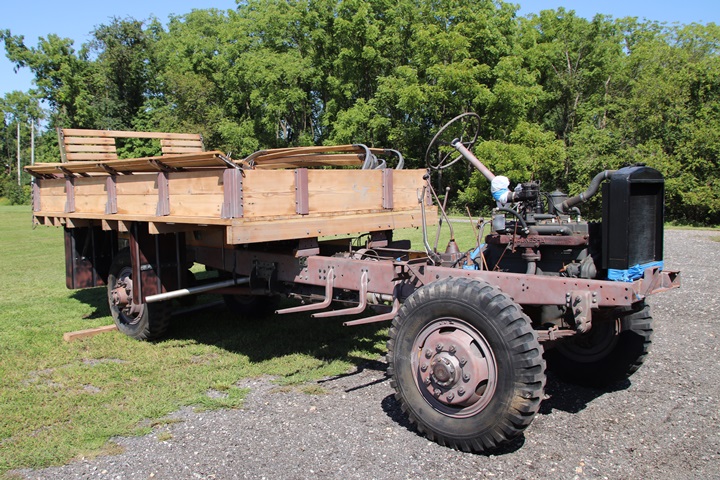
In September 2022, I was at the Wheels of
Liberation collection of military vehicles in Gettysburg, PA
photographing this Four Wheel Drive Auto Company's HAR-1. It had
just returned from the bead blaster and had not yet been reassembled.
This allowed me to photograph parts of the truck and many of its
components to which one does not normally have access. Author's
photo.
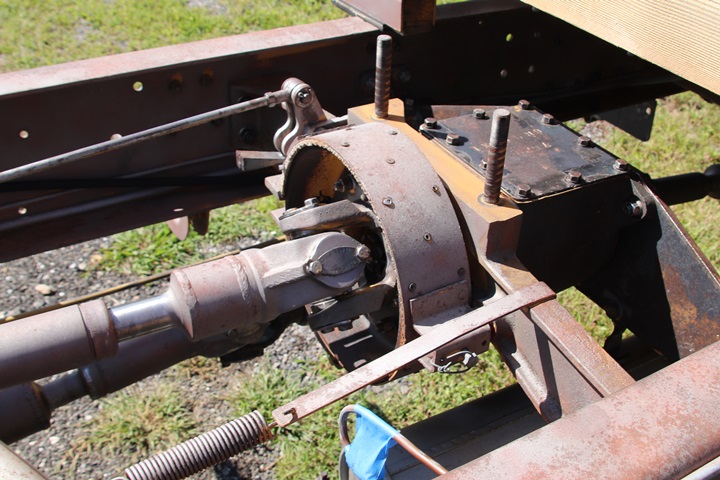
While photographing this portion of the
drivetrain, I noticed a tag with some writing on the universal joint.
Author's photo.
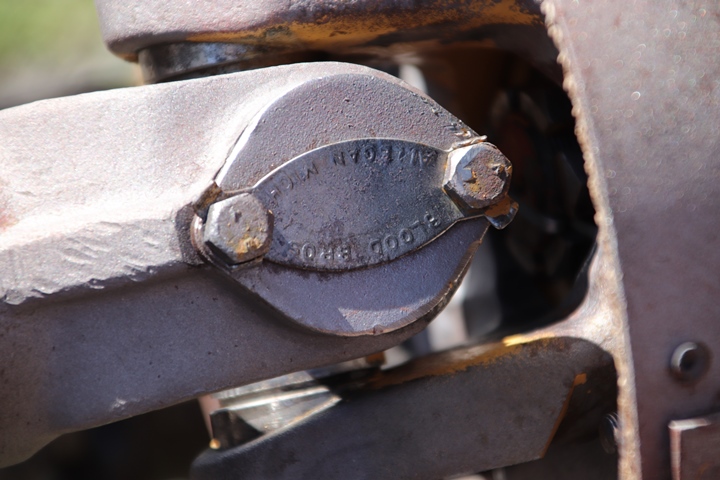
The information on the universal joint says it
was made by the Blood Brothers Machine Company of Allegan, MI, which is
a company name I had not seen before. All of the universal joints on the HAR-1 were provided by
the Blood Brothers. Author's photo.
At the turn of the 20th
Century, the Blood Brothers began making bicycles in Kalamazoo, MI.
In 1914, the brothers purchased a factory in Allegan, MI, and began
making race cars with their own unique chain drive. The
Cornelian race car was driven by Louis Chevrolet in the 1915
Indianapolis 500. Mr. Chevrolet had to drop out due to engine
valve failure but did place 20th in the event.
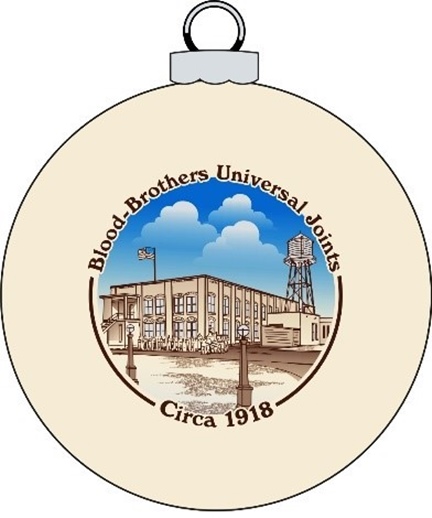
As I began to investigate the
Blood Brothers Machine Company in earnest at the Allegan Area Chamber of
Commerce website, I noted that the Chamber was selling Blood Brothers
Christmas ornaments. While the Rockwell International plant that
was its descendent had closed thirty years earlier, the Chamber still
remembered the Blood Brothers Machine Company by selling Christmas
ornaments. This told me that the former company had a large impact
on the town.
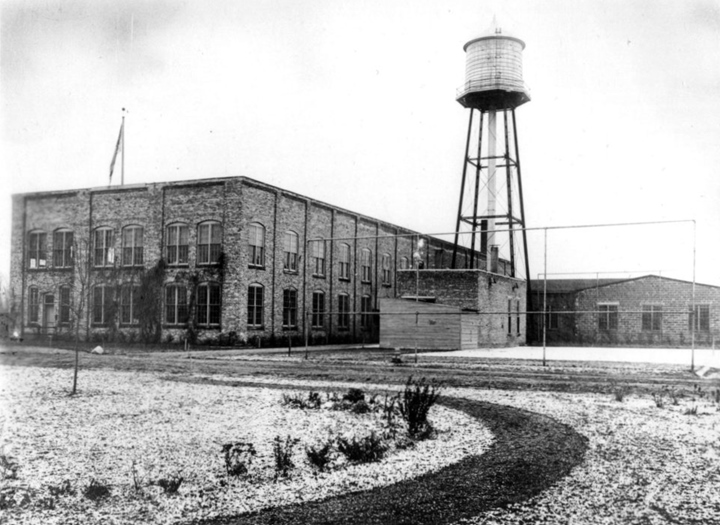
In 1900, Maurice, Clarence, and Charles
Blood began producing bicycles in Kalamazoo, MI. In 1914, the
brothers purchased this former glass factory in Allegan, MI in which to
build their cars. Production of the Cornelian automobile as a
non-race car began in 1914 and ended in September 1915 when only 100 were sold. At this point,
the company began manufacturing universal joints for the automobile
and farm implement industries.
In 1936, due to financial difficulties, the
Blood Brothers Machine Company became a wholly owned subsidiary of the
Standard Steel Spring Company of Coraopolis, PA. Then in 1975 the
ownership of the company became the property of Rockwell International,
a large conglomerate of the era.
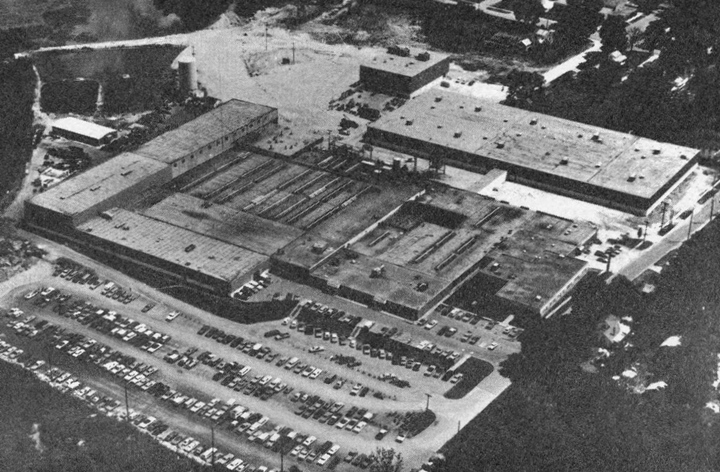
By 1979, the facility had expanded to the
plant size shown here that totaled 343,000 square feet of floor space on
31 acres. The operation employed 750 workers. But it would
not last. Rockwell's share of the drivetrain business began to
fall off, and in 1987, it closed the plant. This occurred after
another Rockwell facility in Iowa was chosen to carry on with the
production from both plants, when the union in Iowa voted to take wage
concessions and the State of Iowa gave Rockwell a $1.4 million grant.
However, to get the grant, the State of Iowa stipulated that Rockwell
had to close other plants making the same product. Therefore, in
1987, the plant shown here was closed.
This was a disaster for Allegan, MI.
Currently, Allegan, MI has a population of just over 5,200 persons.
To lose a factory that provided jobs for over 10% of the population of
the town was severe and traumatic for the workers, their families, and
the citizens of the area. It is no wonder that 40 years later the
Chamber of Commerce produced a Blood Brothers Machine Company Christmas
Ornament. The company started by the Blood Brothers in 1914 had
become a mainstay of Allegan, MI.
Now for the kicker in the rest of the story.
The Iowa plant only lasted about ten years. Rockwell took the
State of Iowa's money and then also closed that plant.
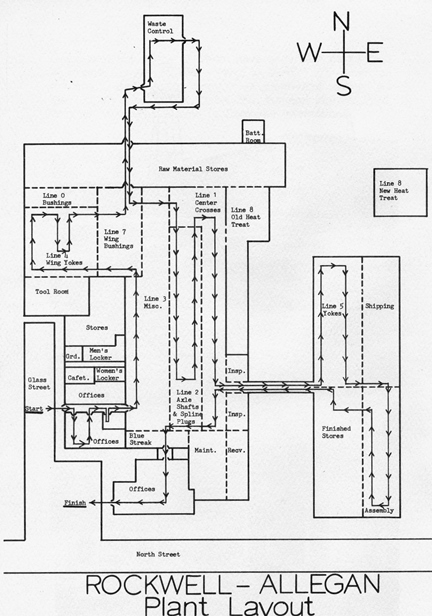
This shows the layout of the facility in the
mid-1970s.
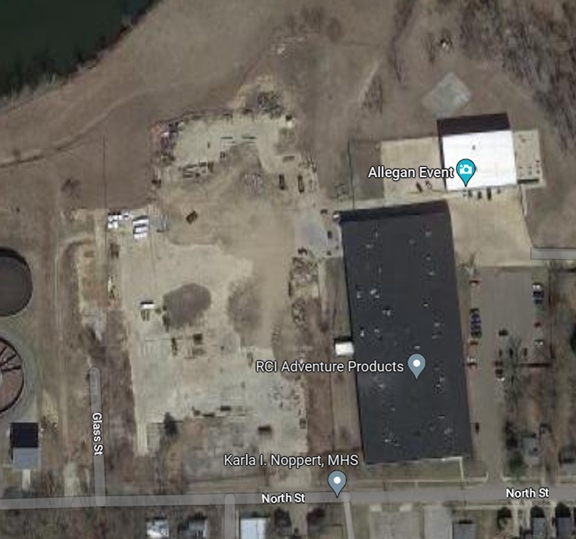
I see this all too often. Where a
factory once stood is now empty space. However, the former drive
shaft final assembly plant has been repurposed with a new occupant.
Image courtesy of Google Maps.

Image courtesy of Google Maps.
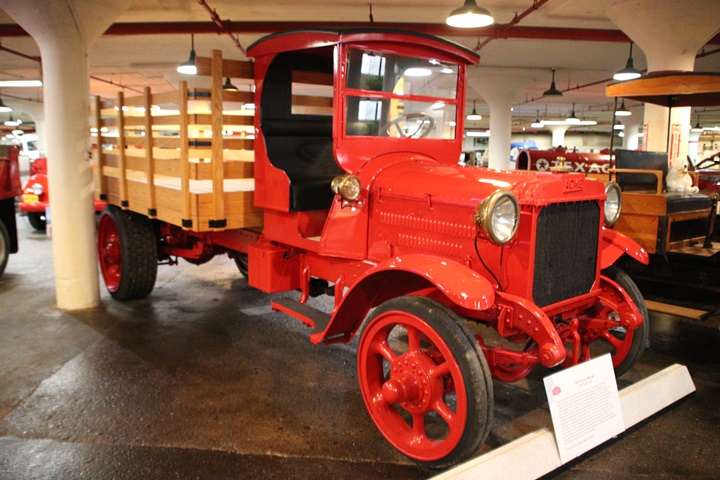
This 1926 Acme Model 125 five-ton truck is
on display at the National Auto and Truck Museum in Auburn, IN.
The information placard in front of the truck notes that it came
equipped with Blood Brothers universal joints. Author's photo.
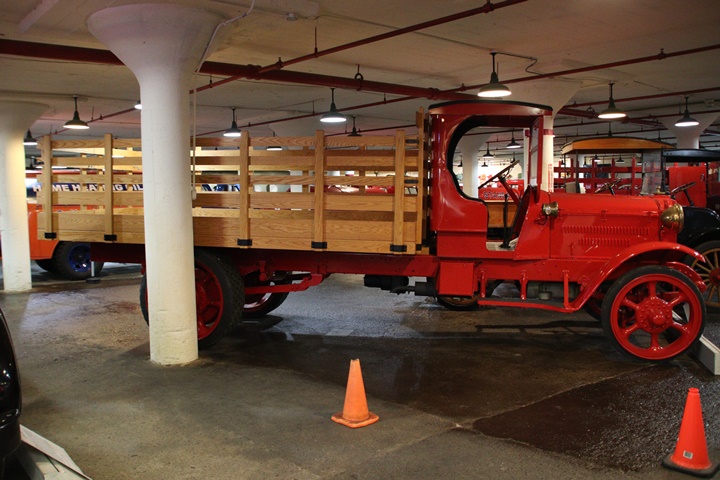
I had looked at this truck and read
the information on it several times during past visits. However,
on my December 2022 trip to the museum, the name Blood Brothers now
meant something to me. I had to see if it still had Blood Brothers
universal joints installed. Therefore, for the next few minutes I
was underneath the truck photographing universal joints. Author's
photo.
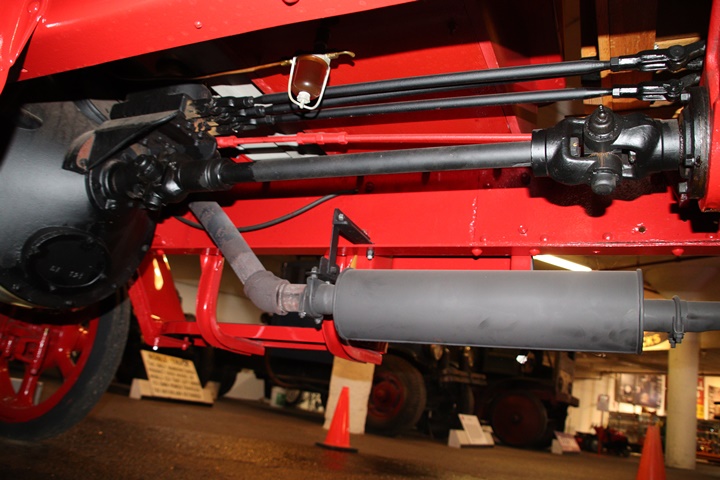
Both universal joints on this truck were
made by the Blood Brothers of Allegan, MI. Author's photo.
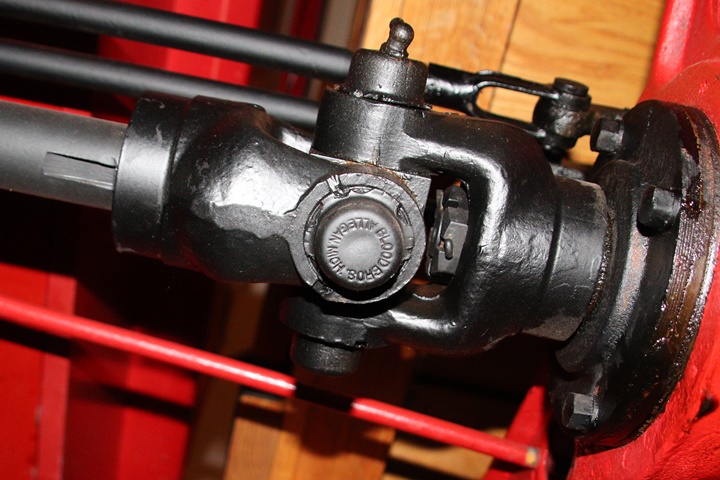
This photo of the underside of the rear
universal most plainly shows the company's name and location.
Other end caps on the two universal joints were more heavily painted and
the name was not as clear. Author's photo.
Blood Brothers Machine Company World War
Two Products: The company
produced universal joints and propeller shafts for several different
military vehicles during the war. Table 1 shows information
obtained from several pre-World War Two newspaper articles on War
Department (U.S. Army) contracts the company was awarded. After
the attack on Pearl Harbor, military contracts were normal business and
no longer mentioned in the newspapers. All of the information I
have been able to acquire on the company shows that it produced
universal joints and propeller shafts for various military vehicles.
However, there was one news article dated
October 30, 1942, in the Detroit Free Press that named the Blood
Brothers as furnishing components to two Michigan ship building
companies. Great Lakes Engineering Works in River Rouge, MI, and
the Lyons Construction Company of Whitehall, MI were reported as being
two shipyards that were producing ships for the war effort. Great
Lakes Engineering Works produced at least 20 ore carriers during the war
along with other types of cargo ships. The cargo ships had a need
for some applications for universal joints manufactured by the Blood
Brothers Machine Company of Allegan, MI. Blood Brothers may have
also been a supplier for other undocumented wartime applications.
Also, one historical document notes that 900
workers were employed at the Blood Brothers' plant making Jeep
components. The 1945 edition of the Ordnance Supply Catalog for
the Ford GPW and Willys-Overland MB does not show the Blood Brothers as
being a supplier. However, it may have been making the parts under
subcontract to another company or was a supplier early in the war.
Suppliers may have changed for the Jeep as the war progressed.
What this does tell me is that there is more to the story that I have
yet to uncover. However, I have found and presented a sufficient
amount of information to show that the Blood Brothers Machine Company of
Allegan, MI was, like many other small companies in the United States,
instrumental in helping to win World War Two.
|
Table 1 - Blood Brothers Machine Company
Government Contracts |
|
Product - Customer |
Contract Amount |
Date |
| Universal Joints - War
Department |
$1,410.00 |
December 1940 |
| Flexible Joints - War
Department |
$2,261.60 |
August 1941 |
| Flexible Joints - War
Department |
$4,528.00 |
September 1941 |
|
Total |
$8,199.60 |
|
Table 2 shows that the Blood Brothers Machine
Company furnished universal joints and propeller shafts for a variety of
trucks and for the M4/M4A1 Sherman tanks. The M4/M4A1 Sherman
tanks were powered by a Continental radial aircraft engine. There
were several types of Sherman tanks produced during World War Two with
different engines. However, the M4/M4A1 series was the type
utilized by the United States Army for the entire conflict. They
were used in North Africa and Italy, landed with American forces at
Normandy in June 1944, and served until V-E Day. One of the
attributes of the Sherman tank was its reliable drivetrain, of which the
Blood Brothers universal joints and propeller shafts were an important
component. The Blood Brothers Machine Company was instrumental in
helping to win World War Two.
|
Table 2 - Known Blood Brothers Machine Company World War Two
Military Product
Applications |
|
Product Type |
Vehicle Manufacturer |
Vehicle Application |
Number of Vehicles Built |
| Various
Propeller Shafts and Universal Joints |
Ward-LaFrance |
M1
and M1A1 Wreckers 6x6
|
4,925 |
| Various
Propeller Shafts and Universal Joints |
Kenworth |
M1
and M1A1 Wreckers 6x6
|
840 |
| Universal
Joints |
Four
Wheel Drive Auto Company |
Truck, 4-ton,
4x4, Cargo HAR-1 |
7,000 |
| Universal
Joints |
Four
Wheel Drive Auto Company |
Truck, 5-6-ton,
4x4, Prime Mover and Cargo SU-COE |
4,481 |
| Various
Components - Front Winch |
Brockway |
6-Ton, 6x6
Chassis for Bridge Erector |
1,166 |
| Various
Components - Front Winch |
FWD |
6-Ton, 6x6
Chassis for Bridge Erector |
168 |
| Various
Components - Front Winch |
Ward LaFrance |
6-Ton, 6x6
Chassis for Bridge Erector |
589 |
| Various
Components - Front Winch |
White |
6-Ton, 6x6
Chassis for Bridge Erector |
1,152 |
| Propeller
Shaft Universal Joints |
Corbitt |
6-Ton, 6x6
Prime Mover |
3,211 |
| Propeller
Shaft Universal Joints |
White |
6-Ton, 6x6
Prime Mover |
4,946 |
| Propeller
Shaft Universal Joints |
White |
6-Ton, 6x6
Van Chassis |
1,870 |
| Propeller
Shaft Universal Joints |
White |
6-Ton, 6x6
2000 Gallon Tank Truck |
25 |
| Total
Trucks |
|
|
30,373 |
| |
|
|
|
| Propeller
Shaft Universal Joints |
Alco |
M4(75)VVSS
Sherman Tank |
2,150 |
| Propeller
Shaft Universal Joints |
Baldwin |
M4(75)VVSS
Sherman Tank |
1,233 |
| Propeller
Shaft Universal Joints |
Chrysler
|
M4(75)VVSS
Sherman Tank |
1,676 |
| Propeller
Shaft Universal Joints |
Chrysler
|
M4(105)VVSS
Sherman Tank |
1,641 |
| Propeller
Shaft Universal Joints |
Pressed Steel |
M4(75)VVSS
Sherman Tank |
1,000 |
| Propeller
Shaft Universal Joints |
Pullman
Standard |
M4(75)VVSS
Sherman Tank |
689 |
| Total M4
Tanks |
|
|
8,389 |
| |
|
|
|
| Propeller
Shaft Universal Joints |
Lima
Locomotive Works |
M4A1(75)VVSS
Sherman Tank |
1,655 |
| Propeller
Shaft Universal Joints |
Pacific Car
and Foundry |
M4A1(75)VVSS
Sherman Tank |
926 |
| Propeller
Shaft Universal Joints |
Pressed Steel |
M4A1(75)VVSS
Sherman Tank |
3,700 |
| Total M4A1
Tanks |
|
|
6,281 |
| |
|
|
|
| Propeller
Shaft Universal Joints |
Alco |
M7 105mm Gun
Motor Carriage |
3,314 |
| Propeller
Shaft Universal Joints |
Federal
Machine and Welder Company |
M7 105mm Gun
Motor Carriage |
176 |
| Total M7
Gun Motor Carriages |
|
|
3,490 |
| |
|
|
|
| Propeller
Shaft and Universal Joint |
Clark
Equipment Company |
Clark
Planeloader Forklift Truck |
? |
Trucks:
Four Wheel Drive Auto Company HAR-1:
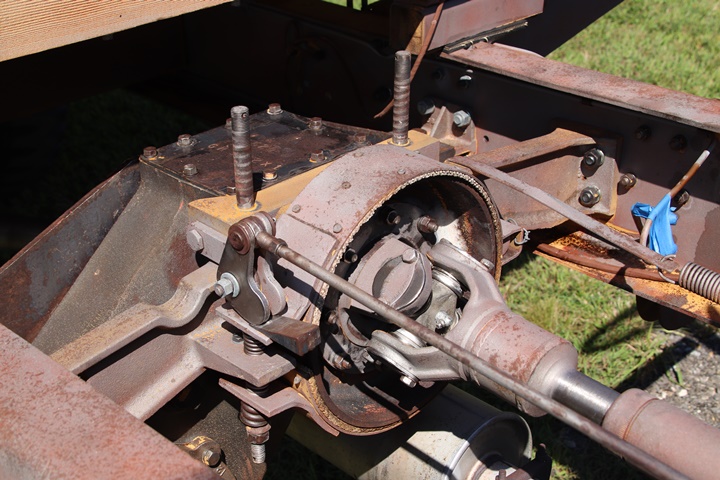
Blood Brothers' universal joints were used
in several locations on the HAR-1. This is the universal joint at
the parking brake. The transfer case is behind the parking brake.
Author's photo.
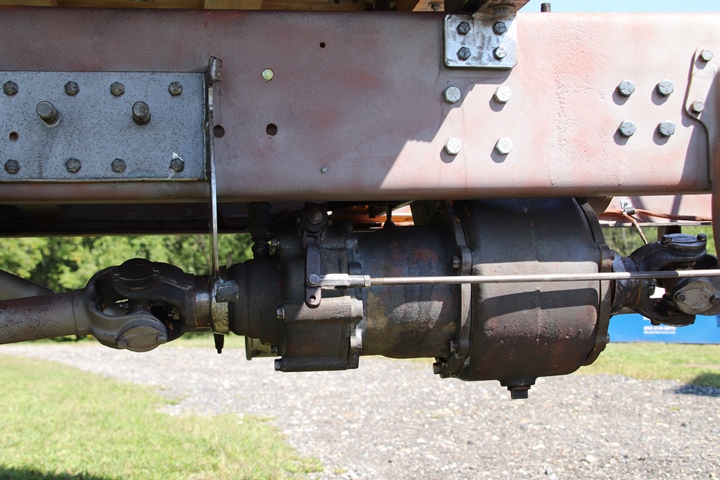
This image shows the bottom side of the
transfer case with the output shafts. Blood Brothers universal
joints are used on each output shaft. Author's photo.
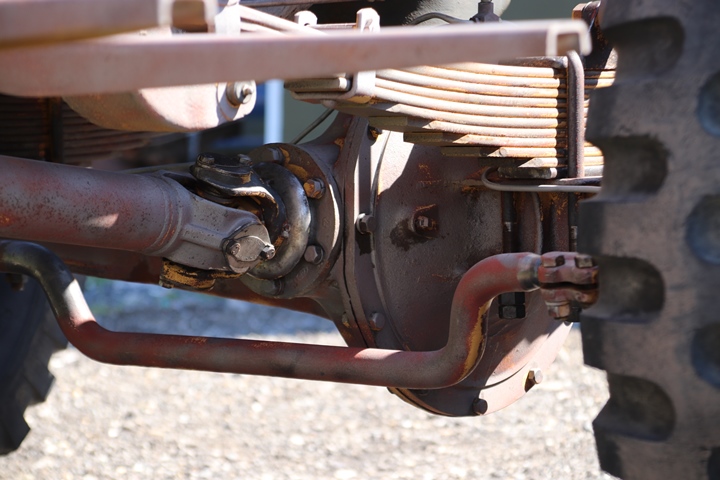
A Blood Brothers universal joint is at the
front differential. Author's photo.
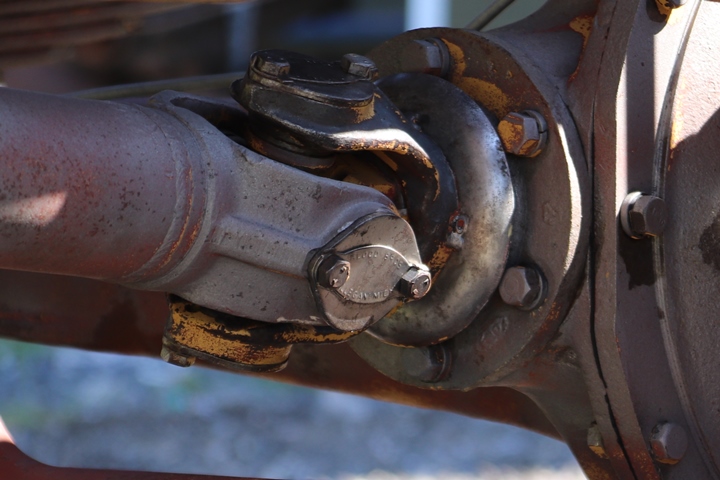
Author's photo.
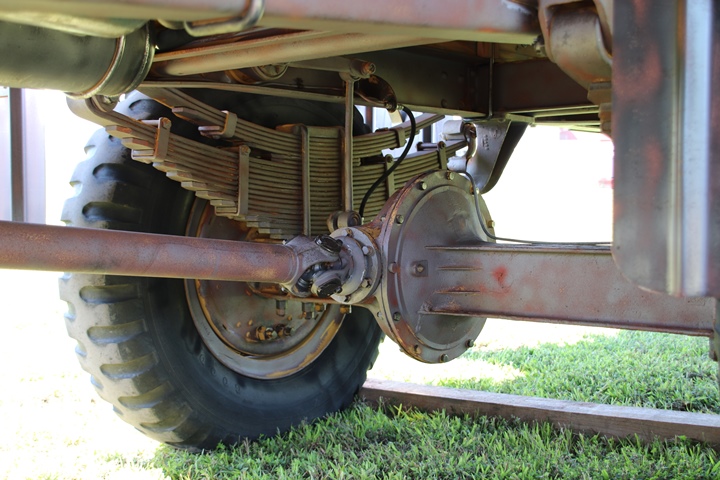
The universal joint at the rear axle was also made by the Blood Brothers
Machine Company. The Four Wheel Drive Auto Company produced 7,000
HAR-1 trucks with Blood Brothers universal joints installed. Author's photo.
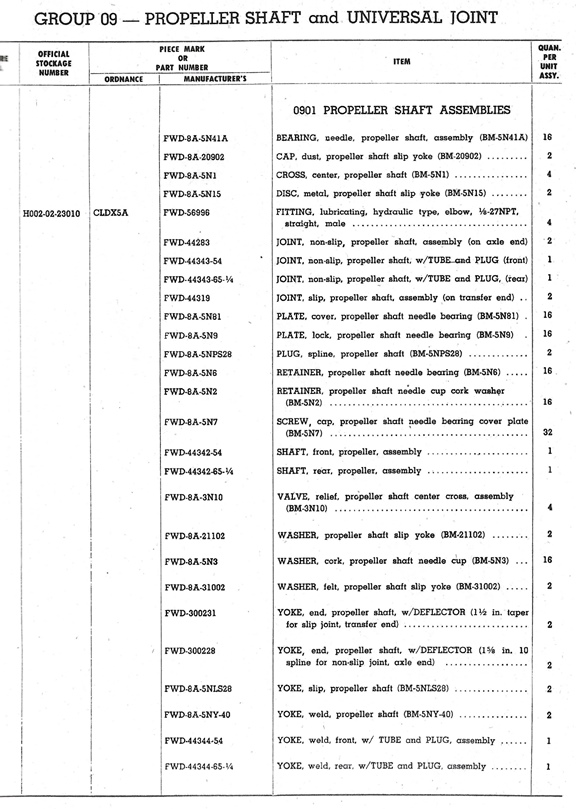
This and the following image are from the
Ordnance Supply Catalog for the HAR-1. BM designates a Blood
Brothers Machine Company component.
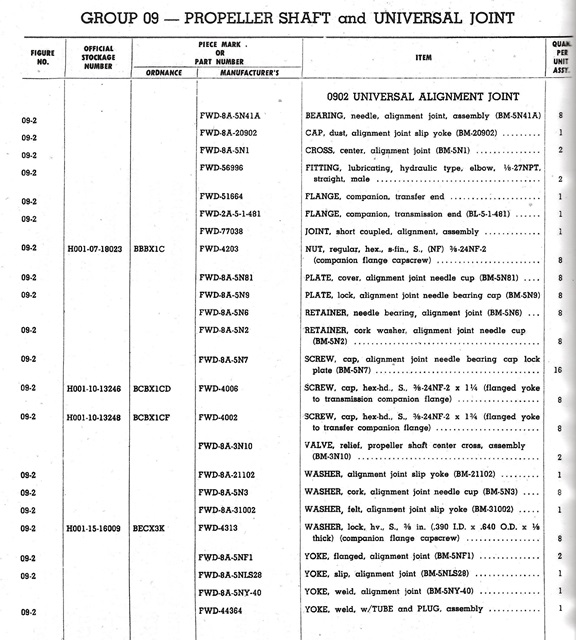
Four Wheel Drive Auto Company SU-COE:
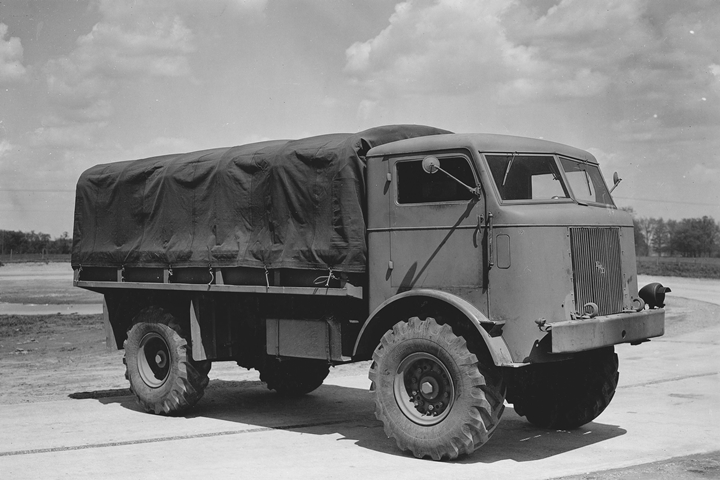
Image added 10-15-2023.
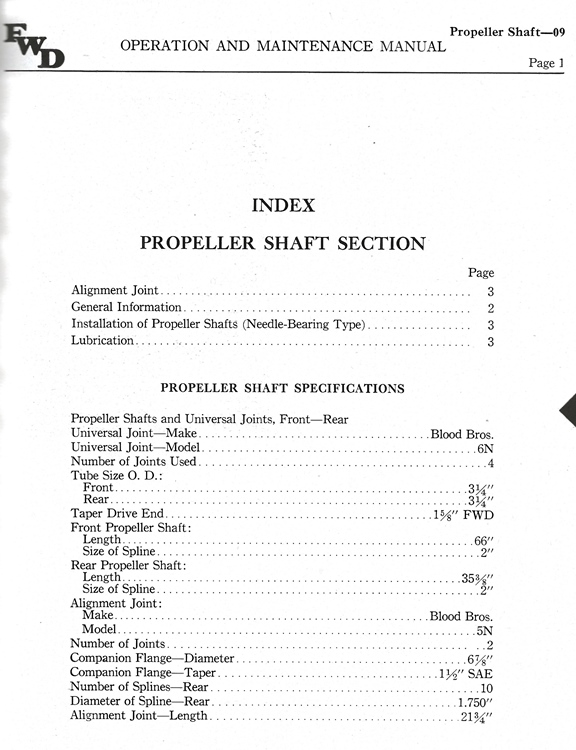
This page from the FWD SU-COE Operation and
Maintenance Manual shows that the vehicle used both the Blood Brothers
Model 6N and 5N universal joints. Image added 10-15-2023.
M1
and M1A1 Wreckers 6x6:
Ward LaFrance and Kenworth
built 5,765 M1 and M1A1 wreckers equipped with Blood Brothers propeller
shafts and universal joints.
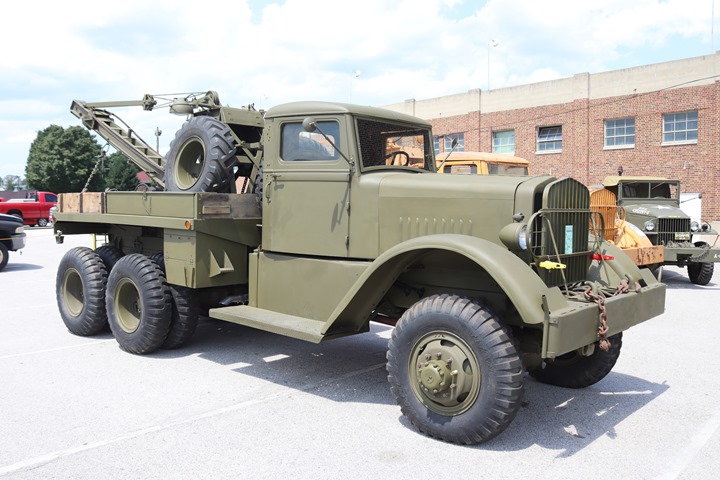
This is a Ward LaFrance Series 2 M1 heavy
wrecker. Author's photo.
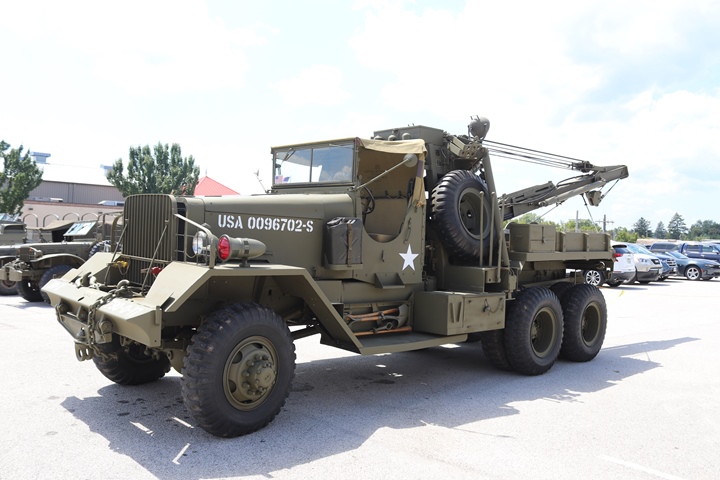
This is an M1A1 Ward LaFrance heavy wrecker.
Author's photo.
Below are the pages from the Ordnance Supply
Catalog, showing the Blood Brothers Machine Company components (BM) used
on the M1/M1A1 series wreckers.
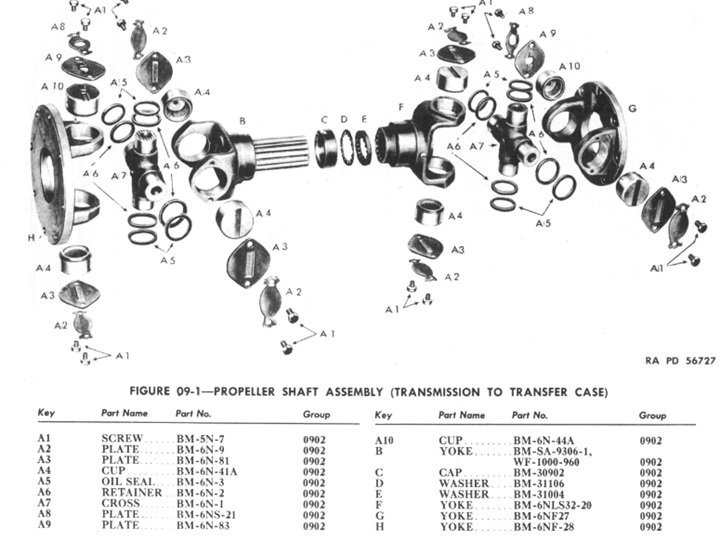
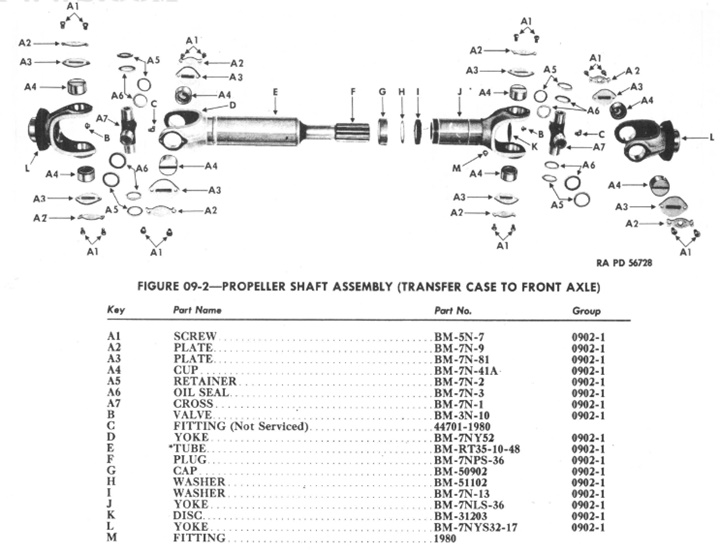
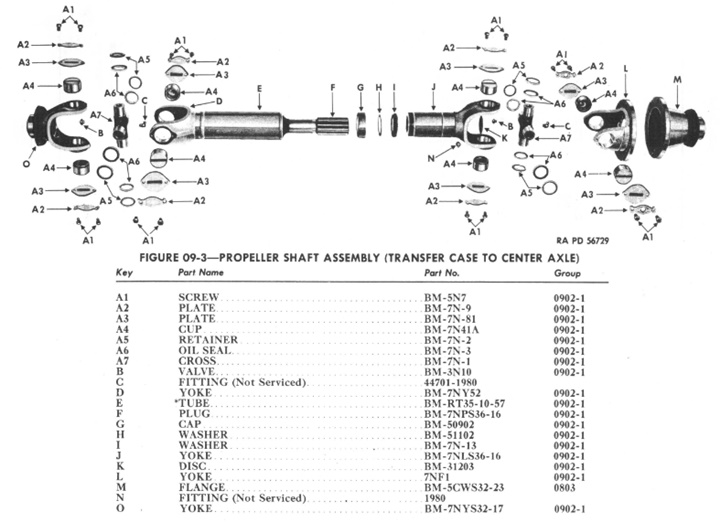
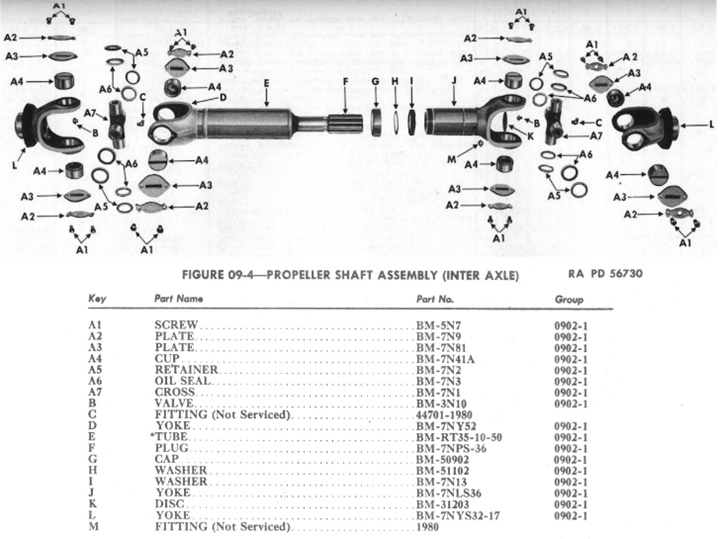
6-Ton 6x6
Chassis for Bridge Erector: Brockway, Four Wheel
Drive Auto Company, Ward LaFrance, and White built a total of 3,075 of
these types of vehicles. Blood Brothers supplied several
components for the front winch on the vehicle.
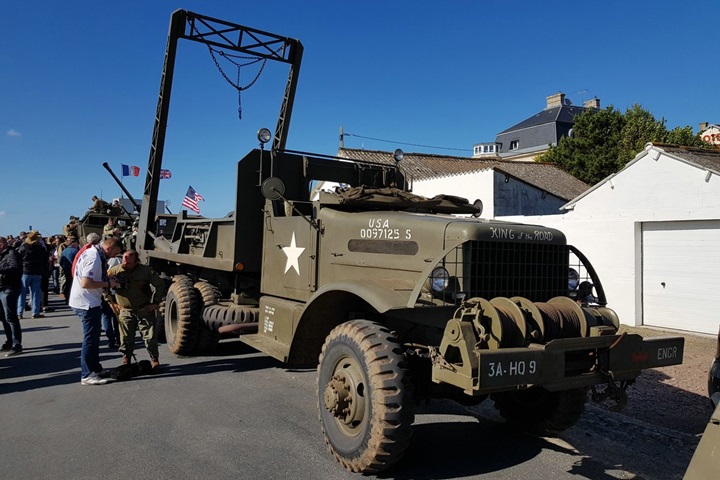
This image shows the front winch which
consisted of some Blood Brothers parts. Photo courtesy of
Pierre-Olivier Baun.
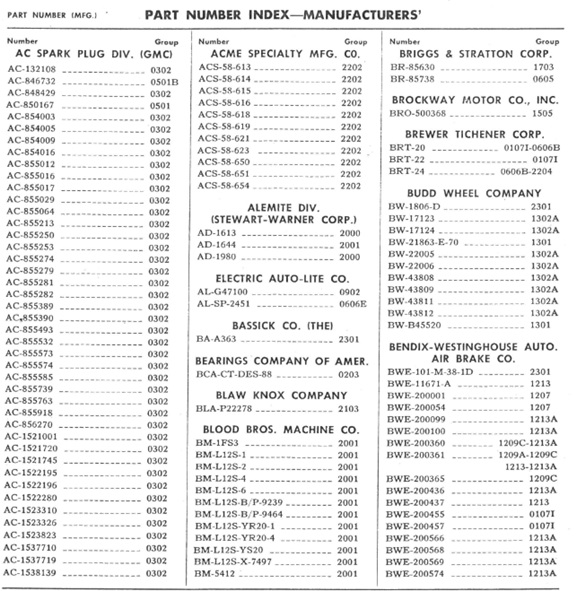
This is a listing of the Blood Brothers
parts used in the front winch.
6-Ton, 6x6
Prime Mover: Corbitt and White built a combined
total of 8,157 of this type of truck. White also produced 1,870
vans on this chassis and 25 2,000 gallon tankers. The Blood
Brothers furnished components for the propeller shafts and universal
joints.
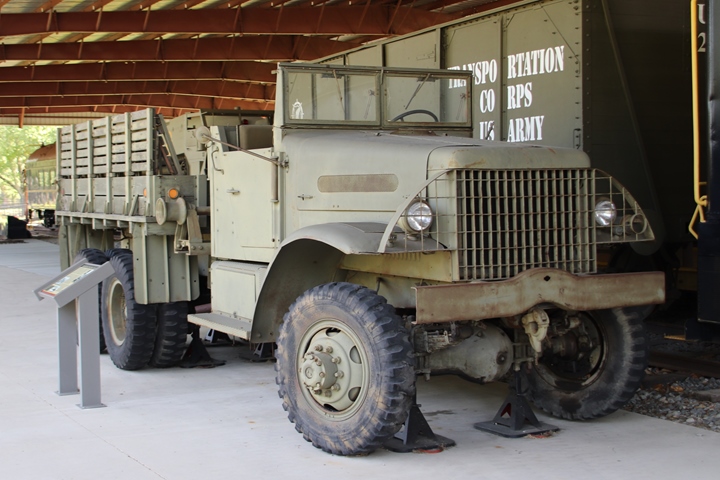
This is a White-built six-ton 6x6 prime
mover. Author's photo.
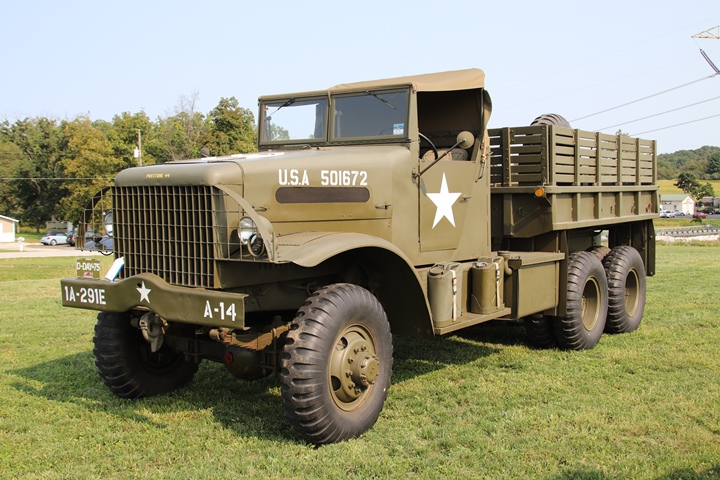
This is the Corbitt version of the vehicle.
Author's photo.

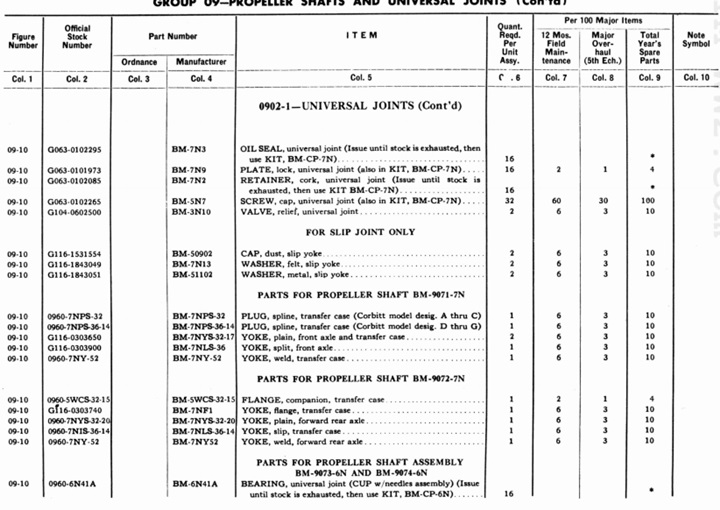
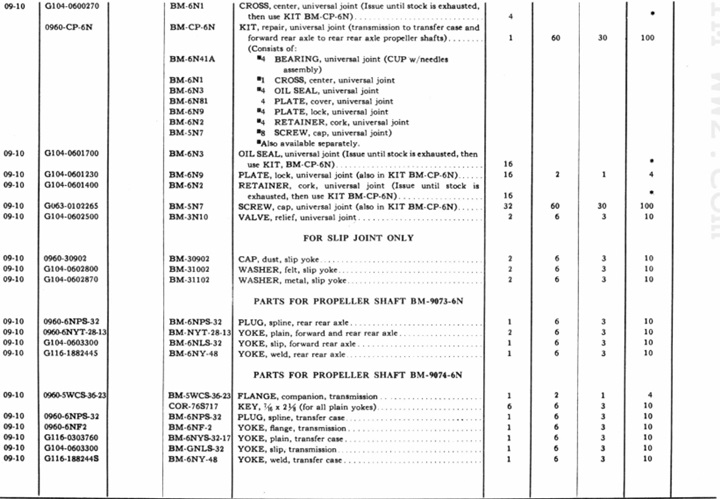
M4(75)VVSS Sherman Tank: The
Sherman tank is the iconic American tank of World War Two. It was
known for the durability and reliability of its drivetrain. Blood
Brothers Machine Company supplied components for the propeller shafts
and universal joints for the M4/M4A1 series of Sherman tanks that
were instrumental in keeping the vehicles running.
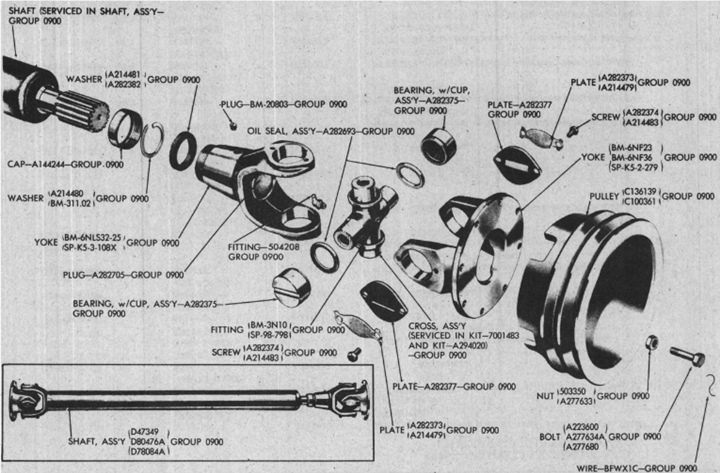
This document and the one below show the
Blood Brothers (BM) components used on the M4/M4A1 Sherman tank and the
105mm Gun Motor Carriages. Note that there were several companies
that supplied parts for these components.

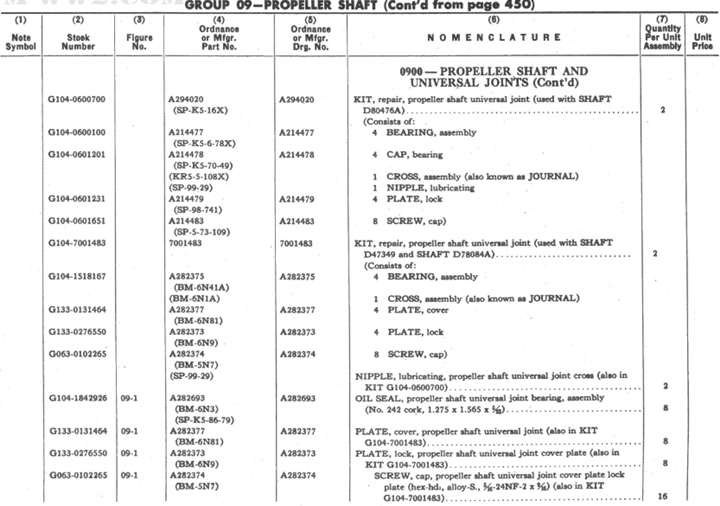

Six different companies built the M4 Sherman
tank. Photos representing four of the six manufacturers are shown
below.
-fortbenning-2018-107w-1.jpg)
This is one of 2,150 Alco-built M4 Sherman tanks
and was built in April 1943. Author's photo.
-crestviewfl-sn1765-2022-107w-1.jpg)
This Alco-built M4 was also built in April
1943, and is the oldest surviving Alco M4. Author's photo.
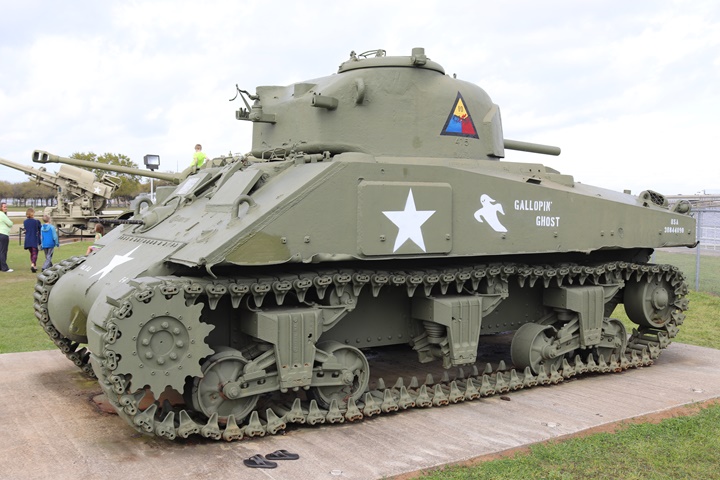
This
M4E9(75) was built by Pressed Steel and is on display at the USS Alabama
in Mobile, AL. Pressed Steel built 1,000 M4 Sherman tanks. Author's photo.
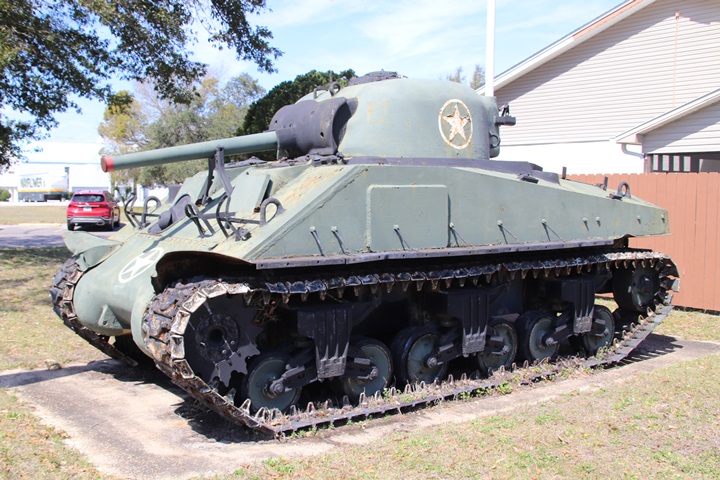
Pullman Standard built 689 M4s like this one. Author's photo.
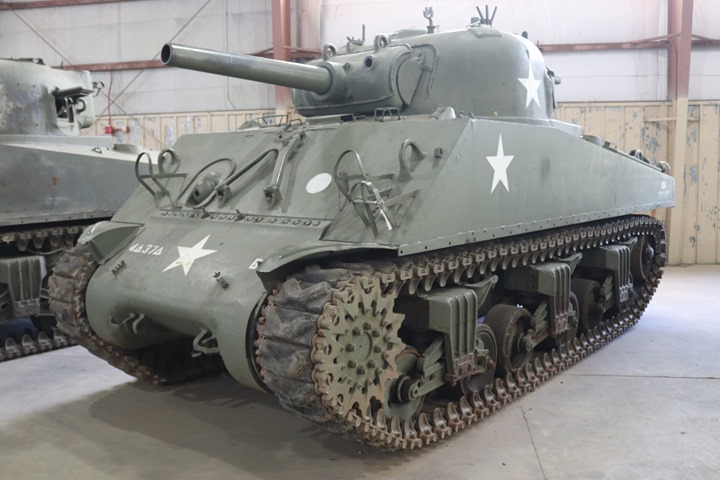
Chrysler built 1,641 M4s with 105mm
howitzers like this one. It also built another 1,000 with a 75mm
main gun. Author's photo.
M4A1(75)VVSS Sherman Tank: The
M4A1 was different from the M4 in that it had a cast, rather than a
welded hull. However, the drivetrains were the same.
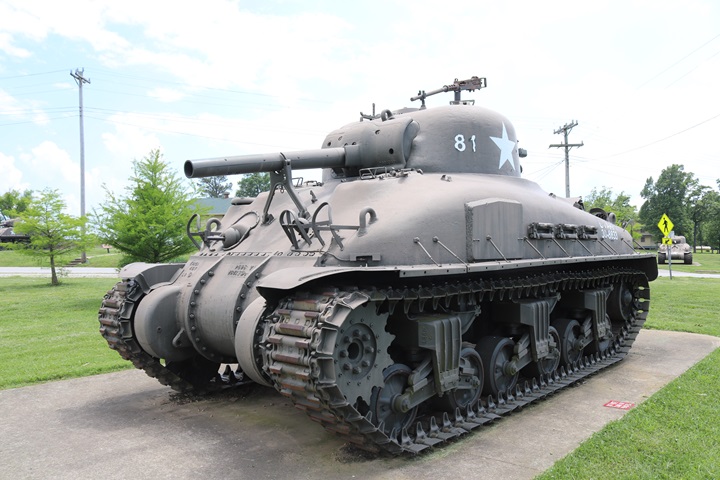
Of the 1,655 M4A1 Sherman tanks that Lima
built, only nine are known to still exist. This is one of three
that are in the United States. It is believed to be Serial Number 7321,
which was built in February 1943. It was converted to a
flamethrower tank and is on display at the Fort Leonard, MO museum
complex. Author's photo.
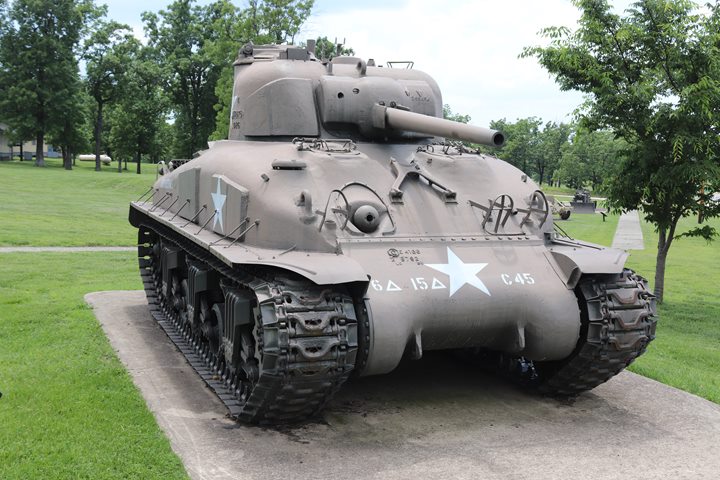
Pacific Car and Foundry built 926
M4A1(75)
VVSS Sherman tanks like this one on display at the Fort Leonard Wood, MO
Museum outside tank park. It is the only one in the United States,
and one of six remaining in the world. Production of the M4A1
started in May 1942 and finished in November 1943. Author's photo
added 6-11-2018.
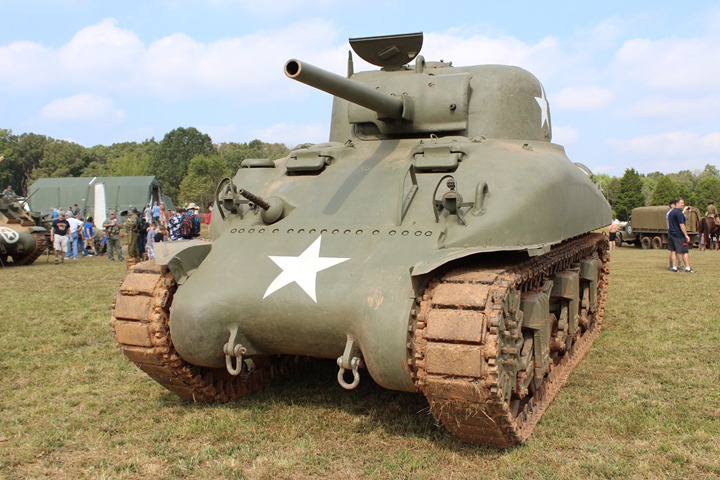
This Pressed Steel-built small hatch
M4A1(75) is serial number 192, built in July 1942. It
is USA number 3014948. It is the oldest Pressed Steel
M4A1(75) known to exist and is owned by the Virginia Military Museum of
Military Vehicles. Note that this tank has the direct vision ports
for the driver and assistant driver. Author's photo.
M7 105mm Gun Motor Carriage:
The M7 used the same chassis as the
M4 and M4A1 Sherman tanks. The Blood Brothers Machine Company
provided components for the propeller shafts and universal joints for
this type of vehicle.
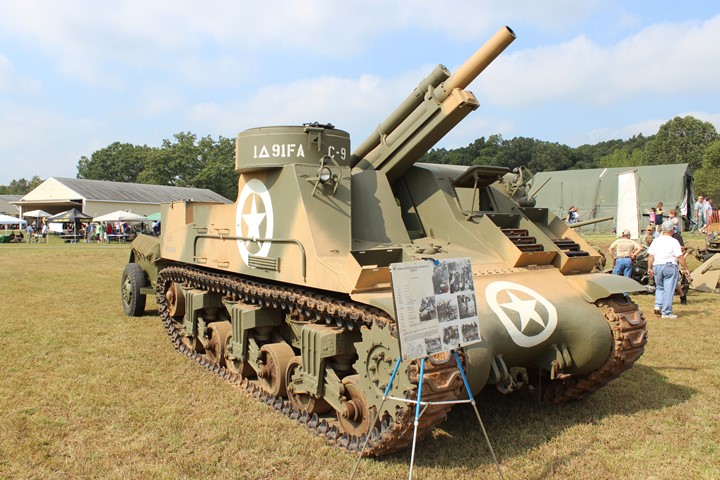
Alco built 3,314 M7s like this one built in November 1942. The Federal
Machine and Welder Company built another 176.
Clark Equipment Company Planeloader
Forklift Truck: An undetermined number of Planeloaders were
built by Clark in nearby Battle Creek, MI. The Blood Brothers
Machine Company supplied universal joints and propeller shaft
components.
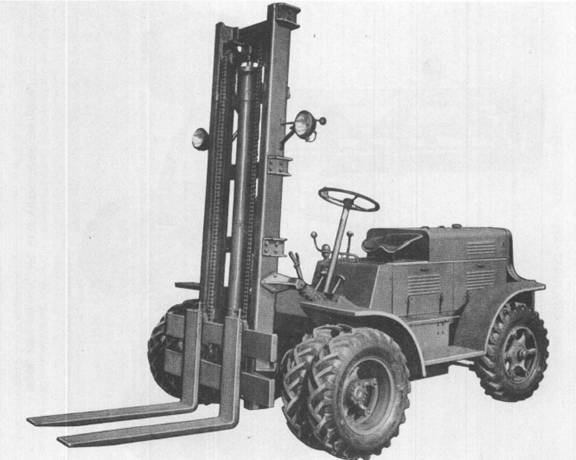
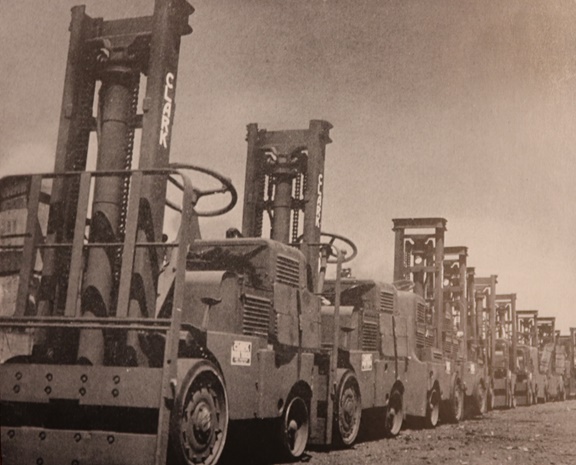
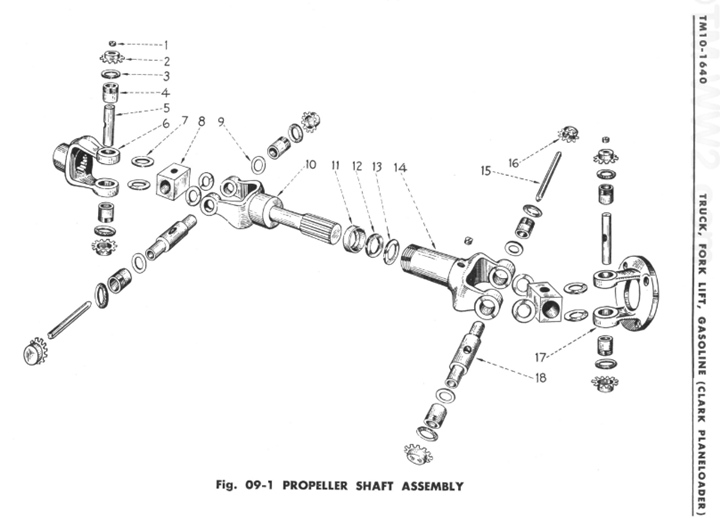
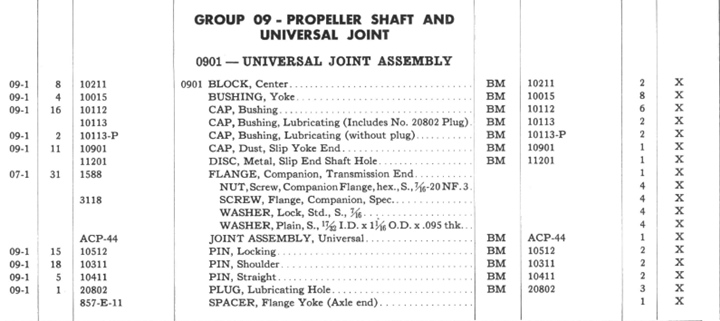

|







































-fortbenning-2018-107w-1.jpg)
-crestviewfl-sn1765-2022-107w-1.jpg)











